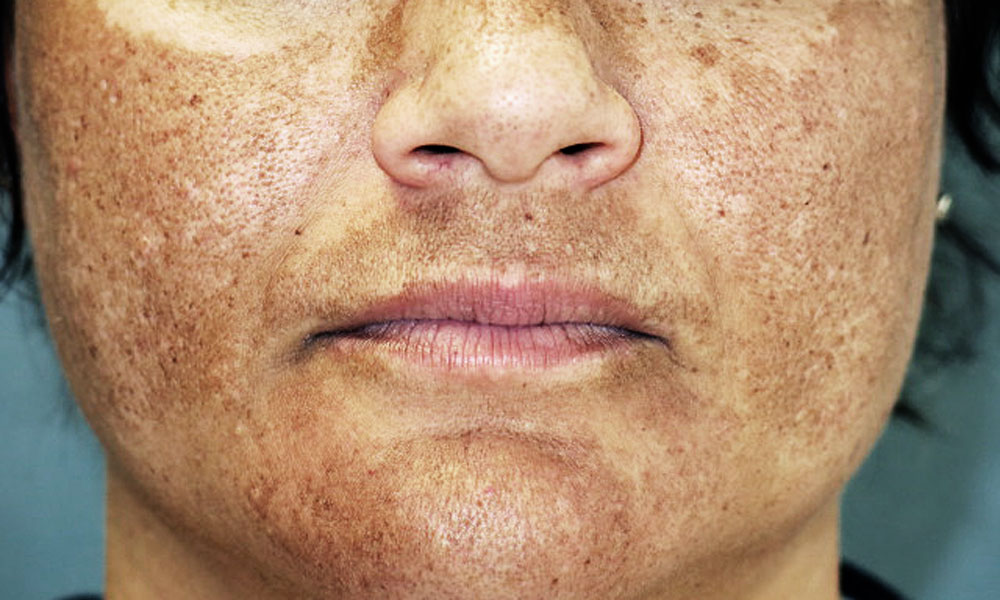Melasma is a very common patchy brown, tan, or blue-gray facial skin discoloration, usually seen in women in the reproductive years. It typically appears on the upper cheeks, upper lip, forehead, and chin of women 20-50 years of age. Although possible, it is uncommon in males. Most of those with melasma are women. It is thought to be primarily related to external sun exposure, external hormones like birth control pills, and internal hormonal changes as seen in pregnancy. Most people with melasma have a history of daily or intermittent sun exposure, although heat is also suspected to be an underlying factor. Melasma is most common among pregnant women, especially those of Latin and Asian descents. People with olive or darker skin, like Hispanic, Asian, and Middle Eastern individuals, have higher incidences of melasma.
Prevention is primarily aimed at facial sun protection and sun avoidance. Treatment requires regular sunscreen application, medications such as 4% hydroquinone and other fading creams.



 Contact Us
Contact Us







 Hospitals
Hospitals
 Doctors
Doctors
 Diagnostic
Diagnostic
 Pharmacy
Pharmacy
 Health Tips
Health Tips
 Blog
Blog

























Comments